From Blockages to Balance: How BICOM Therapy Supports Thyroid Health in Animals
From Blockages to Balance: How BICOM Therapy Supports Thyroid Health in Animals
Thyroid health is central to your animal’s energy, skin, weight, and overall comfort. When the thyroid underperforms, you and your vet address it first with proper diagnosis and treatment. Alongside that clinical pathway, many integrative practitioners explore veterinary BICOM therapy as complementary support to encourage balance, reduce reactivity, and harmonise the system. In this guide from Bioresonance training, you’ll learn how training-led methods approach “therapy blockages,” why elimination organs matter, and how meridians and chakras are considered in holistic healing frameworks. We’ll also be clear about evidence and advertising standards, so you can make informed choices without hype.
What BICOM can and cannot claim
Before we explore the training approach, clarity comes first. Regulatory and advertising bodies state that bioresonance devices should not be promoted as diagnosing or treating medical disease without robust evidence. That means BICOM-style work for animals is best framed as complementary and supportive, used alongside veterinary care rather than instead of it. The UK’s ASA/CAP guidance and Australia’s TGA have both cautioned against medical claims for bioresonance in advertising.
Within the BICOM veterinary community itself, you’ll also find frank notes: randomised controlled studies in veterinary medicine are lacking, so bioresonance for animals is not recognised by studies; owners should keep conventional care at the centre and view BICOM as an adjunct.
Key takeaway: keep your vet in the lead for labs and medication. Use BICOM-informed methods as complementary support, not a replacement.
What “Bioresonance training” offers (and how it helps learners)
If you’re a vet, therapist, or keen learner, Bioresonance training provides online resources, therapy tips, and events to deepen your understanding of BICOM methods. You can study at your own pace, revisit modules, and access event-style materials such as congress papers and blog articles that discuss thyroid-related topics.
Training pages also highlight practical tools (like an AI therapy assistant page), links to congress papers, therapy tips, and upcoming events with experienced educators — useful for building structured, safe, and transparent practice habits.
Thyroid health in animals: the integrative lens
Low thyroid function affects energy, coat, skin, thermoregulation, and mood. While your veterinarian confirms and treats thyroid disease, a BICOM-informed approach looks at the milieu — the larger web of inputs that may burden comfort or resilience. This includes an ordered way of addressing therapy blockages, then supporting elimination organs, and only afterwards working with “stressful information” via frequency programmes.
Short, calm sessions spaced at sensible intervals are emphasised for animal comfort and to avoid overtreatment. Practitioners often plan every 1–2 weeks initially, adjusting for age and species.
The training framework: from blockages to balance
1) Clear therapy blockages first
In BICOM training materials, “therapy blockages” are factors believed to impede harmonious response. Examples often cited include scar interference fields, vertebral or jaw restrictions, radiation/geopathic stress, energetic blockages in meridians and chakras, and burdens related to vaccinations, medications, or spikes, all assessed through the practitioner’s bioenergetic testing framework. The intent is to reduce reactivity before deeper work.
Why it matters for thyroid health: An over-reactive system may respond unpredictably. Training encourages clearing these obstacles first, so any later thyroid-supportive harmonisation happens on a calmer baseline.
2) Support elimination organs early
Opening “elimination organs” (liver, kidneys, lymph in the holistic sense) is taught as a foundational step. The logic: if you later work with stress signals, the system needs open routes to process them. In training, this is introduced during the first two or three sessions, often before targeted programmes, so the body’s natural clearing capacities are supported.
For learners: This sequencing is central to Bioresonance training pedagogy and helps new practitioners avoid common pitfalls like starting “too deep” and provoking initial aggravations.
3) Address stressful information in the right order
Training emphasises an “outside-to-inside” approach:
Extracellular milieu first: allergic reactivity, yeasts/fungi, extracellular bacteria, parasites, and chemicals.
Intracellular next: viruses, intracellular bacteria, and environmental toxins (like heavy metals).
This order aims to minimise overwhelm and build momentum. Combinations are common — for instance gluten/gliadin with yeasts, or dairy proteins with parasites — and trainees are taught to test and harmonise each component until it no longer resonates in their system’s lexicon.
4) Harmonise and stabilise
Sessions typically conclude with harmonisation programmes and 5-element stabilisation, again to avoid overtreatment and to consolidate gains, especially important for sensitive animals or those on thyroid medication.
Training pearl: adjust time and amplification for core programmes to the individual — this is reiterated to avoid initial aggravations and to keep the experience gentle.
Where meridians and chakras fit in
Holistic healing frameworks often integrate meridians and chakras as maps for evaluating energetic flow. In BICOM-style training, these are used to identify energetic blockages that could correlate with stubborn patterns around the throat/neck area, posture, vocal use, or stress circuits in animals. Clearing such blockages is placed early in the plan, before addressing complex extracellular or intracellular burdens.
While these models are not conventional medical diagnostics, they form part of the training vocabulary many learners find helpful when they structure complementary sessions respectfully around veterinary care.
Practical session structure taught to beginners
First 1–2 sessions (gentle start):
Basic harmonising programmes
Open elimination organs
Remove therapy blockages (including energetic ones)
Keep sessions short; monitor the animal’s comfort closely
Subsequent sessions (stepwise depth):
Address extracellular loads (allergic, fungal, parasitic, chemical)
Then explore intracellular loads (viral, intracellular bacteria, environmental toxins)
Rebalance and stabilise with 5-element tools; adjust intervals to 1–2 weeks to avoid overtreatment
Why learners appreciate this:
It’s structured, calm, and designed for animals. It aligns with Bioresonance training’s online, repeatable format where you can rewatch demos and refine your order of operations.
Responsible integration with veterinary thyroid care
Bioresonance-style support should never delay blood tests, medication, or rechecks. A responsible path looks like this:
Veterinary diagnosis and plan: Your vet confirms thyroid status and prescribes medication where indicated.
Share records: Practitioners trained through Bioresonance training are coached to work transparently and ask for medication lists and lab summaries.
Set supportive goals: Focus on comfort, coat quality, digestive ease, stress modulation — not disease claims. Regulatory advice stresses avoiding unsubstantiated treatment/diagnosis claims.
Monitor together: Keep vet check-ins for T4/TSH and watch for any changes that need clinical attention.
Adjust mindfully: Short sessions, properly spaced, help reduce initial aggravations.
What you’ll find on the Bioresonance training site
Self-paced learning: Study online at your leisure, revisit sections, and keep live video presentations for reference — ideal for building confidence before you work with animals under supervision.
Blogs and therapy tips: Articles frequently cover thyroid-adjacent topics and bioenergetic diagnostics, with ongoing posts about Hashimoto’s-style considerations and stressor mapping.
Congress papers & resources: A central hub for downloadable reading and structured notes to support your study.
Events and expert teaching: Schedules and updates from experienced educators help you keep learning in the community.
Tools & support: A “BICOM AI therapy generator” contact page and resource links make it easier to ask questions and get guidance as you practise.
How this complements the wider BICOM veterinary world
Beyond training, it’s useful to know the broader context:
BICOM veterinary pages themselves emphasise that robust veterinary RCTs are lacking; the method is therefore not recognised by animal studies, reinforcing the need for adjunctive positioning.
Manufacturer and partner information highlight human-side device classifications and allergy-focused use cases, while encouraging parallel use with conventional medicine — again supporting a careful, complementary tone.
Some partner pages note access to webinars and specialist courses via international networks, which can be a helpful next step after foundational online learning.
Tips for learners applying this to thyroid health
Keep sessions light and well-timed. Animals with thyroid issues may be sensitive. Respect the 1–2 week cadence and adjust duration and amplification to the individual.
Prioritise the sequence. Blockages → elimination organs → extracellular → intracellular → harmonise and stabilise. It’s the backbone of the method.
Track observable metrics. Energy, coat/skin, stool quality, rest patterns, and mood are practical notes you can share with both your vet and mentor.
Stay evidence-aware in your language. Avoid diagnosis/treatment claims. Use neutral, supportive wording consistent with advertising guidance and the adjunct positioning discussed above.
Ethics and safety: your non-negotiables
No medical claims: Unless and until robust, peer-reviewed evidence exists, keep your claims educational and wellbeing-focused. This aligns with ASA/CAP guidance.
Do not replace veterinary care: The animal’s prescribing vet remains the clinical lead. BICOM work is complementary.
Use training to protect animals: Structured, conservative session design reduces the risk of overreactions and keeps the experience calm.
A short note on devices, courses, and budgeting
Learners often ask about machine pricing and course options. The training site discusses how software features and data management influence cost, which matters if you plan to monitor cases over time. Pair that with guided education so your workflow is safe and methodical from day one.
If you’re outside Germany or working in mixed settings, partner networks provide continuing education for veterinarians and practitioners, useful for staying aligned with good practice while you build skill and confidence.
Clear, helpful CTAs (without pressure)
Explore the thyroid-focused learning path: Review the Bioresonance training blogs and course pages, then map your first three sessions using the sequence above.
Join an event or ask a mentor: Check the events page to connect with experienced educators and refine your thyroid support workflow.
Build your library: Download congress papers and therapy tips so your notes are handy during sessions.
Get in touch: Use the contact page to ask about learning tracks, practice tools, or supervised practice options.
Supporting Thyroid Health in animals with BICOM-style methods begins with honesty and careful sequencing. You start by clearing therapy blockages and opening elimination organs. You move gradually from extracellular to intracellular stressors. You harmonise and stabilise to finish. And through it all, you keep your vet in the lead, your language evidence-aware, and your sessions calm and conservative, because the animal’s safety and comfort come first.
Bioresonance training exists to help you learn that flow, online, at your own pace, and with resources you can revisit whenever you need to strengthen your practice.bioresonancetraining.online
